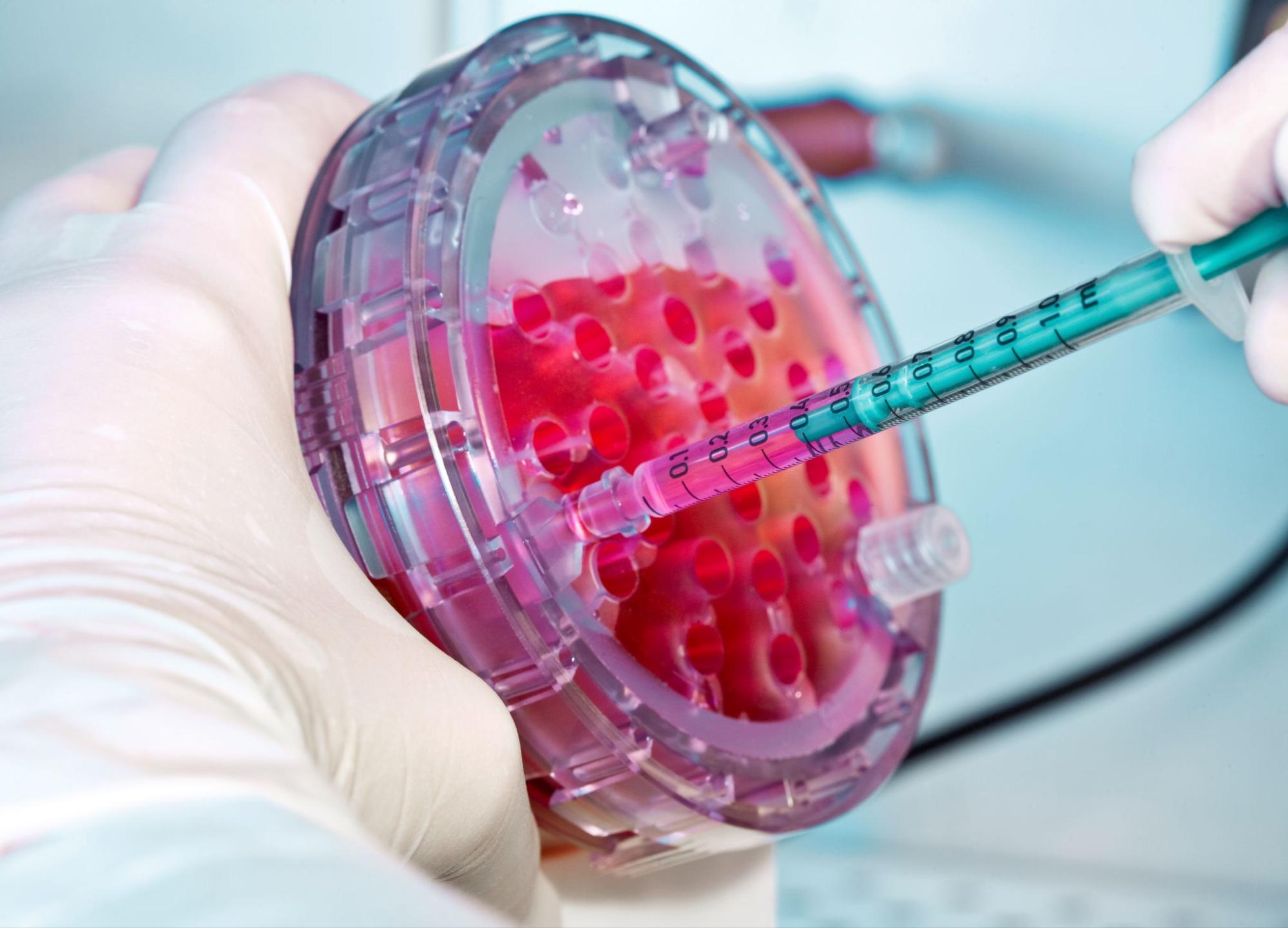
What is Stem Cell Treatment
Stem cell treatment has emerged as a groundbreaking therapy in modern medicine, offering solutions for various health conditions once considered difficult to treat. By leveraging the body’s natural healing ability, stem cell therapies aim to repair, regenerate, and restore tissues. One area of innovation in this field is using amniotic grafts, a powerful resource derived from the amniotic membrane. These grafts transform treatments for skin conditions, injuries, and degenerative conditions.
Understanding the Stem Cell Treatment in Amniotic Grafts
When paired with amniotic grafts, stem cell treatments harness the natural healing properties of the amniotic membrane, a thin but powerful layer that surrounds the fetus during pregnancy. Amniotic grafts are rich in bioactive components that promote tissue repair, reduce inflammation, and support cellular growth, making them valuable in regenerative medicine.
The Science Behind Amniotic Grafts
The amniotic membrane comprises several layers, including the epithelium, basement membrane, and stroma, each playing a crucial role in tissue healing and regeneration. It contains an abundance of biologically active components that facilitate recovery by providing a supportive environment for cell growth and differentiation. These include:
Growth Factors
These biochemical signals stimulate cellular growth, migration, and differentiation, vital in tissue repair and wound healing. Growth factors such as epidermal growth factor (EGF) and transforming growth factor-beta (TGF-β) help accelerate the natural healing process.
Collagen
As a fundamental protein in connective tissues, collagen enhances structural integrity, providing a scaffold that supports cell attachment and tissue reconstruction.
Anti-Inflammatory Properties
The amniotic membrane contains molecules like hyaluronic acid and interleukins that help reduce inflammation, creating an optimal environment for tissue regeneration and minimizing discomfort.
Proteins and Cytokines
Essential signaling proteins and cytokines, such as fibronectin and laminin, regulate cell adhesion, migration, and proliferation, facilitating quicker recovery and improved tissue integration.
The Role of Placental Stem Cells in Stem Cell Treatment
Placental stem cells, derived from the placenta after childbirth, are a valuable resource in stem cell treatment due to their potent healing properties and ethical sourcing. These cells are rich in extracellular matrix components, making them ideal for applications such as amniotic grafts and tissue regeneration.
Characteristics of Placental Stem Cells
Placental stem cells are multipotent, meaning they can develop into various specialized cell types that contribute to tissue repair and immune modulation. These cells play a crucial role in regenerative medicine, offering unique properties that make them highly effective in promoting healing and reducing inflammation.
High Proliferation Potential
Placental stem cells exhibit an exceptional capacity for self-renewal and rapid multiplication. This high proliferation rate allows them to accelerate the regeneration of damaged tissues. Their fast growth capability helps shorten recovery times for patients, making them an excellent choice for individuals seeking quicker healing solutions. Additionally, their ability to support large-scale cell expansion for therapeutic applications without losing effectiveness makes them a valuable resource for medical treatments that require extensive tissue repair. The consistent and efficient replication of these cells ensures their effective use across various regenerative therapies.
Immune Privilege
Placental stem cells possess immune-privileged properties, meaning they are less likely to trigger an immune response when introduced into the body. This feature makes them highly suitable for patients with compromised immune systems or autoimmune conditions. One of the key benefits of their immune privilege is the reduced risk of rejection, even when used in allogeneic (donor-based) applications, offering a viable treatment option without the complexities of immune compatibility. Their ability to increase compatibility across a broad range of patients without the need for extensive immune suppression makes them an attractive and versatile option in regenerative medicine.
Non-Controversial Source
Placental stem cells are obtained from donated, full-term placental tissue following childbirth, making them a non-controversial and ethical alternative to embryonic stem cells. Since they are collected post-birth without causing harm to the mother or baby, they do not raise ethical or religious concerns, offering a widely accepted option for regenerative medicine. Their availability is also sustainable, as placentas are routinely discarded after delivery, ensuring a consistent and renewable source of stem cells without depleting valuable medical resources. Additionally, placental stem cells provide a safe and reliable option for regenerative treatments without the moral dilemmas often associated with embryonic stem cell research.
How Do Amniotic Grafts Work in Stem Cell Treatment?
Amniotic grafts play a vital role in enhancing the effectiveness of stem cell therapies by providing a biologically rich scaffold. Amniotic grafts enhance the body’s natural healing processes, making the treatment more effective and long-lasting. The method of using amniotic grafts generally involves several key steps to ensure maximum effectiveness and patient safety:
Preparation
Preparation involves collecting, sterilizing, and processing amniotic grafts to ensure they meet strict medical standards. The amniotic membrane is carefully harvested, thoroughly screened for contaminants, and processed to retain its natural regenerative properties. This meticulous preparation guarantees the safety, sterility, and potency of the graft before it is used in medical applications.
Application
The application of amniotic grafts in stem cell therapy can vary depending on the condition being treated. The grafts can be directly applied to the affected area, such as wounds or surgical sites, acting as a protective covering that fosters tissue growth. Combining stem cells with the amniotic graft enhances tissue regeneration and improves structural support.
Regeneration
Regeneration occurs as the bioactive properties of the amniotic grafts and stem cells work together to repair damaged tissues. This dual approach accelerates the healing process and improves functionality and long-term outcomes for patients dealing with chronic conditions, injuries, or degenerative diseases.
Applications of Stem Cell Treatment With Amniotic Grafts
Amniotic grafts have shown remarkable potential in treating a wide range of skin conditions. They harness their regenerative properties to accelerate healing, reduce inflammation, and promote healthy tissue regeneration, producing an ideal environment for skin restoration in acute and chronic conditions.
Chronic Wounds and Ulcers
Amniotic grafts are widely used to treat chronic wounds that fail to heal with conventional methods. Conditions such as diabetic ulcers, venous leg ulcers, and pressure sores benefit significantly from the regenerative capabilities of these grafts. The bioactive components of the amniotic membrane stimulate cell proliferation, improve blood flow, and enhance tissue remodeling, leading to faster wound closure and reduced risk of infection. In diabetic foot ulcers, for example, amniotic grafts help prevent complications such as gangrene and amputation by providing a scaffold that promotes new skin formation.
Burns and Surgical Wounds
They offer a natural and effective solution to support healing for patients recovering from burn injuries and post-surgical wounds. Burns often result in severe tissue damage and scarring, which can lead to long-term functional and cosmetic concerns. The growth factors present in amniotic membranes encourage the regeneration of skin cells, minimize scarring, and reduce pain and inflammation. In surgical settings, amniotic grafts cover incisions and promote seamless wound healing, preventing complications such as infections and excessive scar formation.
Reconstructive Procedures
These grafts are frequently used in reconstructive surgeries to enhance the healing process. In procedures involving skin loss due to trauma, cancer excisions, or congenital defects, these grafts provide a biologically active scaffold that promotes rapid integration of the transplanted skin. The anti-inflammatory and antimicrobial properties of amniotic grafts ensure that the graft site remains healthy and free from infections, allowing for better aesthetic and functional outcomes.
Dermatological Conditions
Amniotic grafts are increasingly explored to treat chronic inflammatory skin conditions such as eczema, psoriasis, and lichen planus. These conditions often involve persistent inflammation, itching, and skin barrier dysfunction. The bioactive properties of amniotic membranes help restore the skin’s integrity by reducing inflammation, soothing irritation, and promoting the regeneration of healthy skin cells. In conditions like psoriasis, where excessive skin cell turnover leads to scaling and discomfort, amniotic grafts help normalize skin regeneration and provide lasting relief.

Is Stem Cell Treatment Safe?
Stem cell treatment utilizing amniotic grafts is generally considered safe, thanks to the biocompatibility and non-immunogenic properties of the amniotic membrane. They carry a low risk of rejection or adverse reactions. To ensure the highest safety standards, seeking treatment from qualified medical professionals and trusted clinics that follow rigorous processing, sterilization, and application protocols is essential. Proper handling and administration of amniotic grafts significantly reduce the likelihood of complications and maximize their therapeutic benefits. Patients considering amniotic graft-based stem cell therapy should discuss their medical history with healthcare providers to determine the most appropriate and safe treatment approach for their specific condition.
The Future of Stem Cell Treatment With Amniotic Grafts
As research and technology continue to advance, the future of stem cell treatment with amniotic grafts looks incredibly promising. Scientists and medical professionals are continually exploring innovative ways to enhance the therapeutic potential of these grafts, expanding their applications in regenerative medicine. From improving treatment outcomes to broadening their use in various medical fields, the future holds exciting possibilities for patients seeking effective, non-invasive healing solutions.
Combining Amniotic Grafts With Other Therapies
Researchers are studying how amniotic grafts work synergistically with other regenerative treatments, such as platelet-rich plasma (PRP), growth factors, and advanced biomaterials. Combining these therapies enhances healing, providing faster recovery times and improved tissue regeneration. For example, combining amniotic grafts with PRP in wound care applications has accelerated healing and reduced inflammation more effectively.
3D Bioprinting and Tissue Engineering
Integrating amniotic grafts with 3D bioprinting technology is an emerging area of research that aims to create complex tissue structures for transplantation. Scientists are working on using amniotic membrane-derived components to construct scaffolds that support the growth of new skin, cartilage, and even organ tissues. This breakthrough could revolutionize treatments for severe burns, traumatic injuries, and congenital defects.
Enhanced Delivery Methods
Future advancements in delivery methods are expected to improve the targeted application of amniotic grafts. Innovations such as controlled-release grafts and microencapsulation techniques are being developed to ensure prolonged therapeutic effects and sustained release of growth factors at the injury site. These enhanced delivery systems aim to maximize the regenerative potential of amniotic grafts while minimizing the need for repeat applications.
Advances in Skin Regeneration
Ongoing research into amniotic grafts opens new possibilities for treating complex skin conditions such as chronic wounds, eczema, and radiation-induced skin damage. Scientists are focusing on enhancing the ability of these grafts to stimulate collagen production and cellular turnover, making them an increasingly viable option for aesthetic and reconstructive dermatology. The goal is to provide patients with long-term skin texture, elasticity, and overall health improvements.

Paving the Way for Healing and Renewal With Stem Cell Treatment
Stem cell treatment using amniotic grafts represents a groundbreaking advancement in regenerative medicine, offering hope to patients with chronic wounds and dermatological conditions. By leveraging the natural healing properties of amniotic tissue, these therapies provide minimally invasive, personalized solutions that support the body’s ability to repair and regenerate itself. The unique combination of bioactive components found in amniotic grafts accelerates healing and improves overall tissue function, making them an invaluable tool in modern medicine.
For individuals seeking cutting-edge regenerative therapies, amniotic grafts offer a promising path to recovery and improved quality of life. Consult with trusted medical professionals to explore the best amniotic graft treatment options for your needs. As science evolves, amniotic grafts stand at the forefront of regenerative medicine, shaping a healthier and more sustainable future for patients worldwide.
Visit the Stem Health Plus LLC blog today to explore more insights on regenerative therapies and innovative treatments. With this knowledge, you can begin your journey to recovery with confidence.
